by Nikki Brighton
Wherever you find humans, you find weeds.
Weeds are pioneer plants doing the healing work where the Earth has been disturbed. Many of these plants have been valued in the past as food and medicine. Unfortunately, in some communities, this important knowledge has been lost. People living close to the land in rural areas are holders of this traditional knowledge, but even here it is disappearing fast.
While you are unlikely to come across invasive weeds while hiking the high mountains, in the homesteads, resorts and farmyards along the edges of the Drakensberg, they are common. Often, habitats have been changed beyond recognition and there is no possibility of returning to the original composition of species. It makes sense therefore to celebrate the plants that are here with us at this moment, who are mining nutrients, absorbing carbon, generating oxygen – and providing free food.
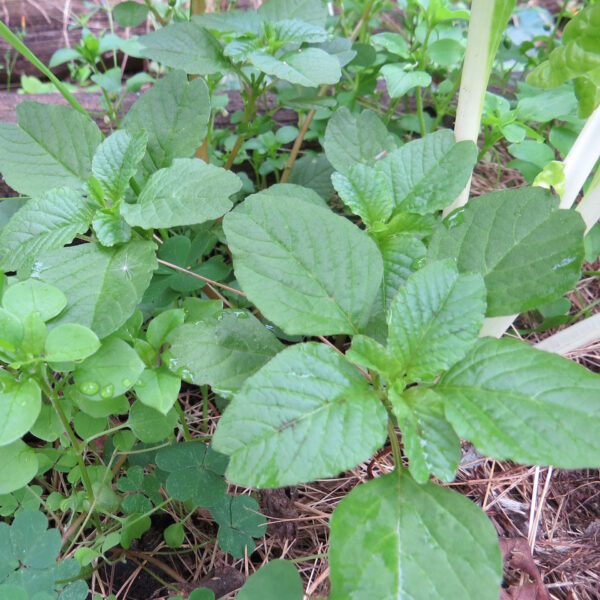
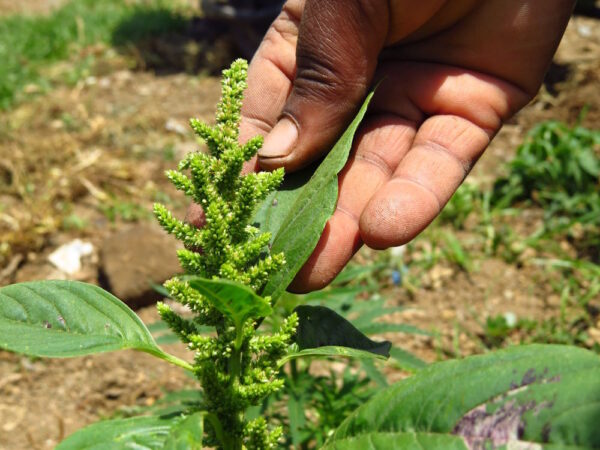
Culture and food are interwoven across the world, with locally abundant ingredients determining the tastes that we prefer. In South Africa, food memories are largely influenced by rural life – hearty, satisfying food. Mostly home grown but including easy to store staples enhanced by an array of cultivated and wild greens. Urbanisation has caused many people to abandon the simple nutritious food of our childhoods in favour of the artificially flavoured ‘modern’ food. In the process our diets have become impoverished. There is a perception that wild greens are ‘poor people’s food’ – around here we call them imifino, while in Lesotho leafy greens are known as morogo. They are, in fact, jam packed with nutrients, often far surpassing that of more commonly eaten leafy greens like Swiss chard and cabbage.
Amaranth is one of the most common greens and grows profusely in poor soils requiring little attention. There are many varieties – green or red, tall or creeping. Amaranth is versatile – use it wherever green leaves are called for in a recipe. It is fabulous mashed into pumpkin, stir-fried with onions, chilli and tomatoes. When steamed, the young flowers taste of broccoli. Amaranth leaves contain more vitamin C than cabbage or chard – just 50g provides 100% of our daily needs. The leaves are rich in protein, beta-carotene, iron, calcium, carbohydrates, and fibre.
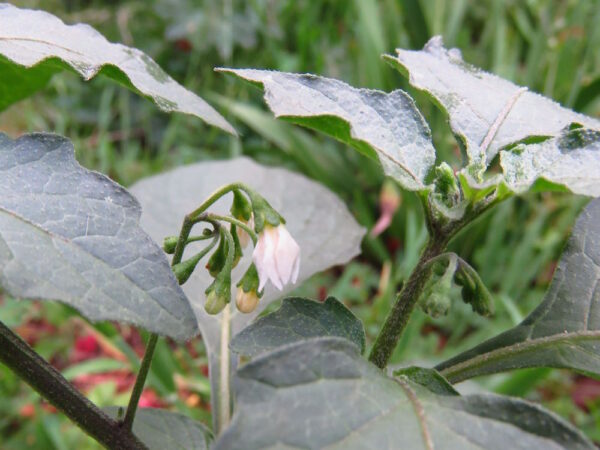
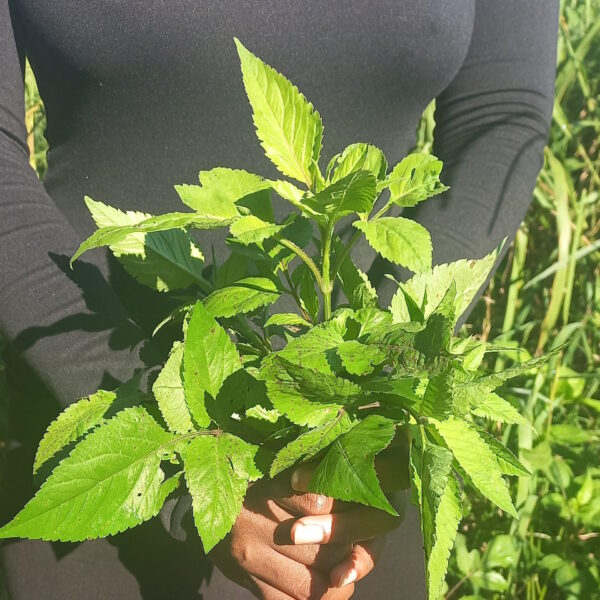
Isijabane (mealie meal with greens) is a popular way to use imifino and a clever way of including greens in a dish for children who are picky eaters. While people often use easy to find imbuya / ugabolo, according to the community elders the very best imifino to use for isijabane is msobo (Solanum nigrum) and intshungu (Momordica balsamina). These leaves add a bitter taste and are perfect.
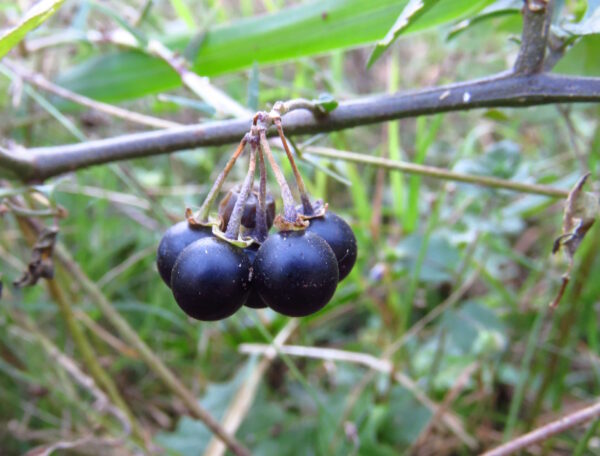
Msobo – Solanum nigrum
These leaves are rich in iron and vitamin A become even tastier once dried and, to reduce the mild bitterness, a little milk can be added when cooking. The purple berries are eaten fresh right off the bush (don’t eat the toxic green ones) or turned into jam. One needs to collect a lot of fruit to make a jar of jam, but it really is the best tasting jam with such an interesting flavour. Look out for it in Drakensberg delis – often named Nastegal.
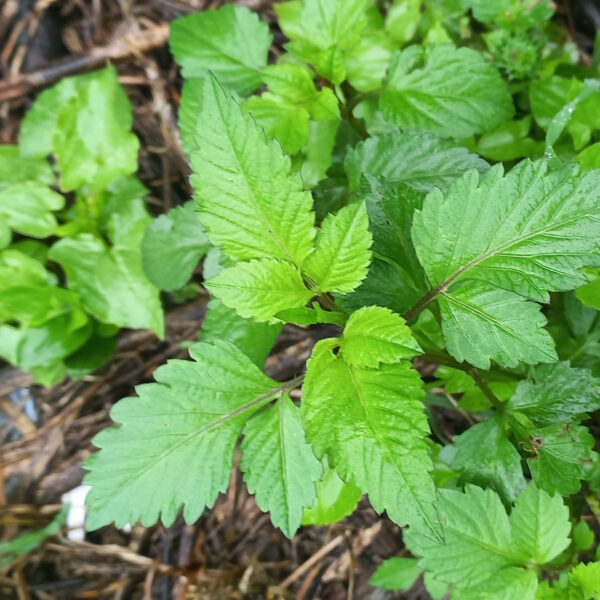
Blackjack – Bidens Pilosa, uqadolo
Blackjack is used as a medicinal plant in many regions of Africa. Roots, leaves and seed are believed to possess antiseptic and anti-inflammatory properties. Decoctions of powered leaves are reported to be helpful in treating many ailments such as arthritis, abdominal trouble, headaches, and diarrhoea.
Young leaves of blackjack are less bitter than older ones. Pick the light green top two leaves from older plants. If you are not crazy about the taste of black jacks on their own, mix in with other greens. Blackjacks are a good source of beta-carotene, iron, iodine, zinc, calcium, vitamins A and E.
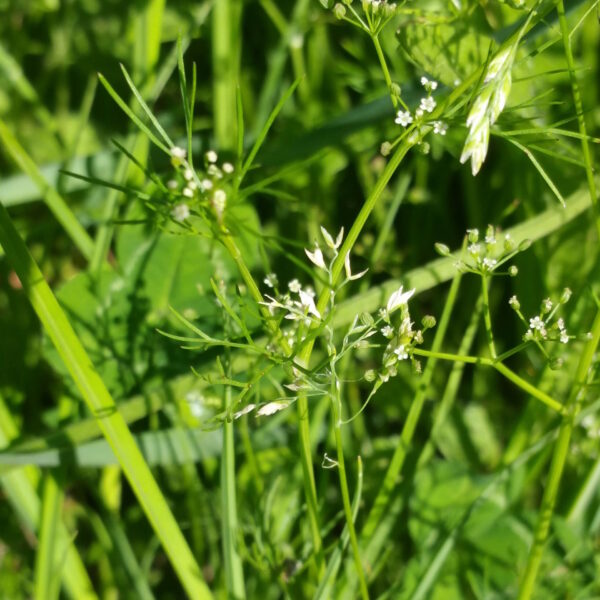
Slender celery – Ciclospermum leprophyllum
This feathery plant is common in shady places in Drakensberg gardens, particularly in spring and autumn. As a garnish, they add a fresh pop of flavour, reminiscent of dill or carrot tops. The dainty leaves are certainly worth picking to garnish a platter of roasted carrots, smoked salmon or add to a sandwich as you would use parsley.
Foraging for uncultivated food is an important way to restore our connection to community and the landscape. Once you take a small step, you can’t look back and will keep on moving toward a more connected way of living.
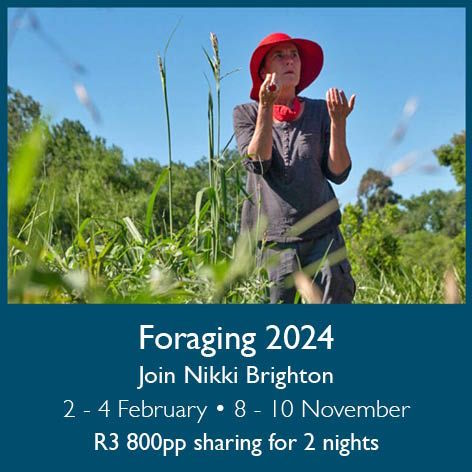

Thank you
Hi Nikki,
Will you be presenting the foraging course in 2025 as well?
Elza van Dijk
Hello Elza
Thanks so much for the message. Nikki has been up to help do some training with our kitchen team but unfortunately we haven’t planned any more dates for 2025…. please keep an eye on our socials as we might add later in the year.
Warm wishes,
Megan